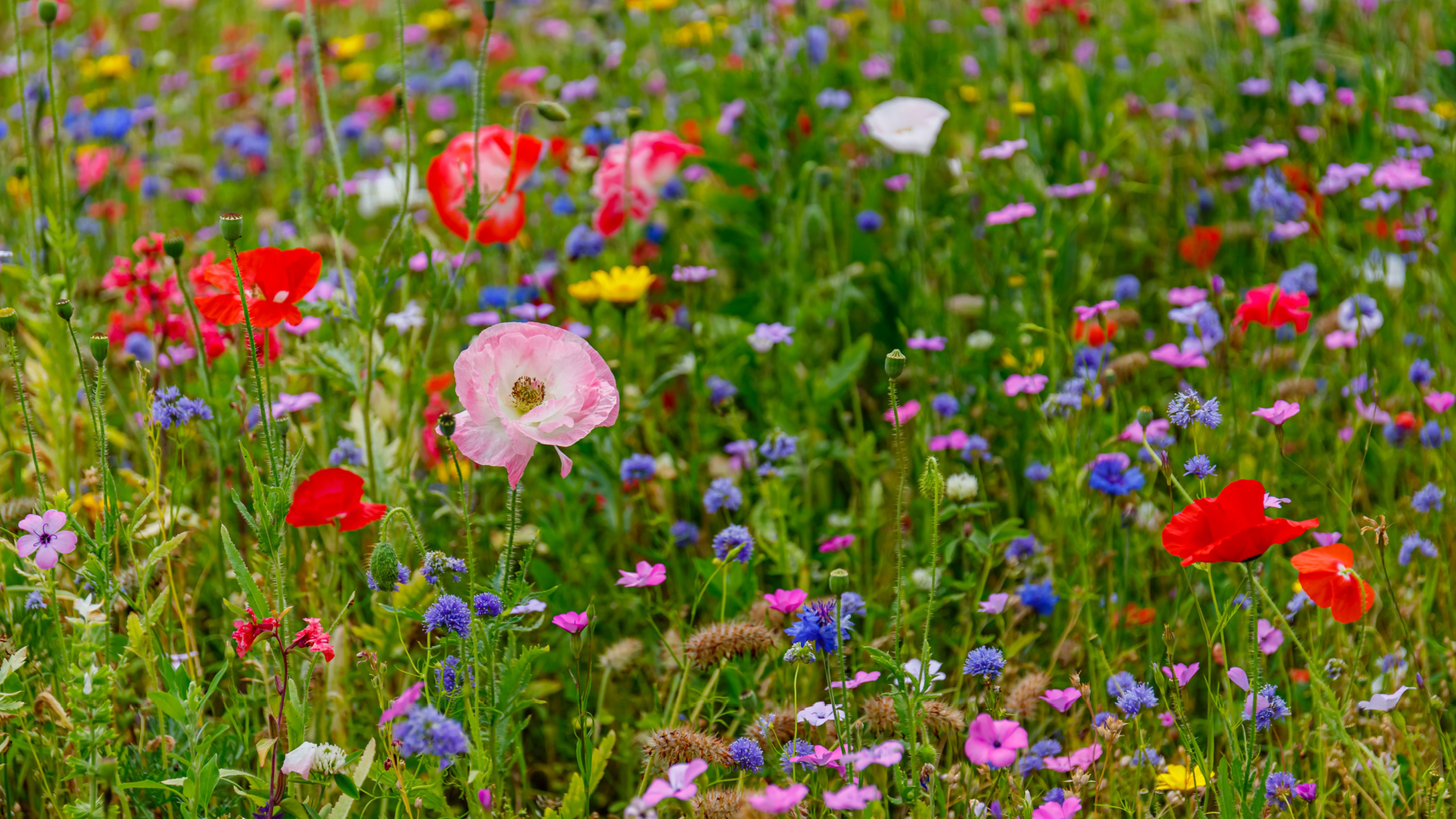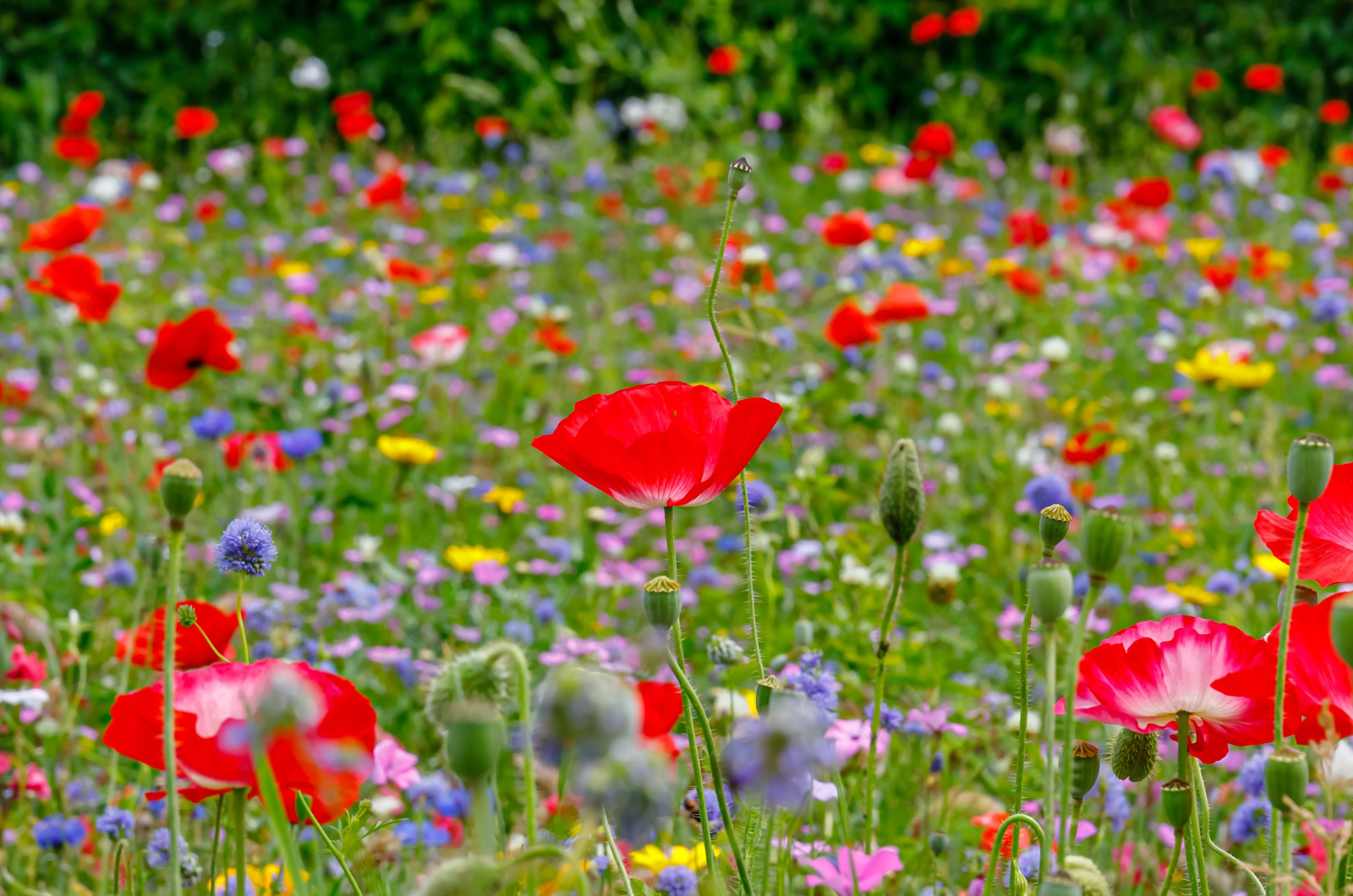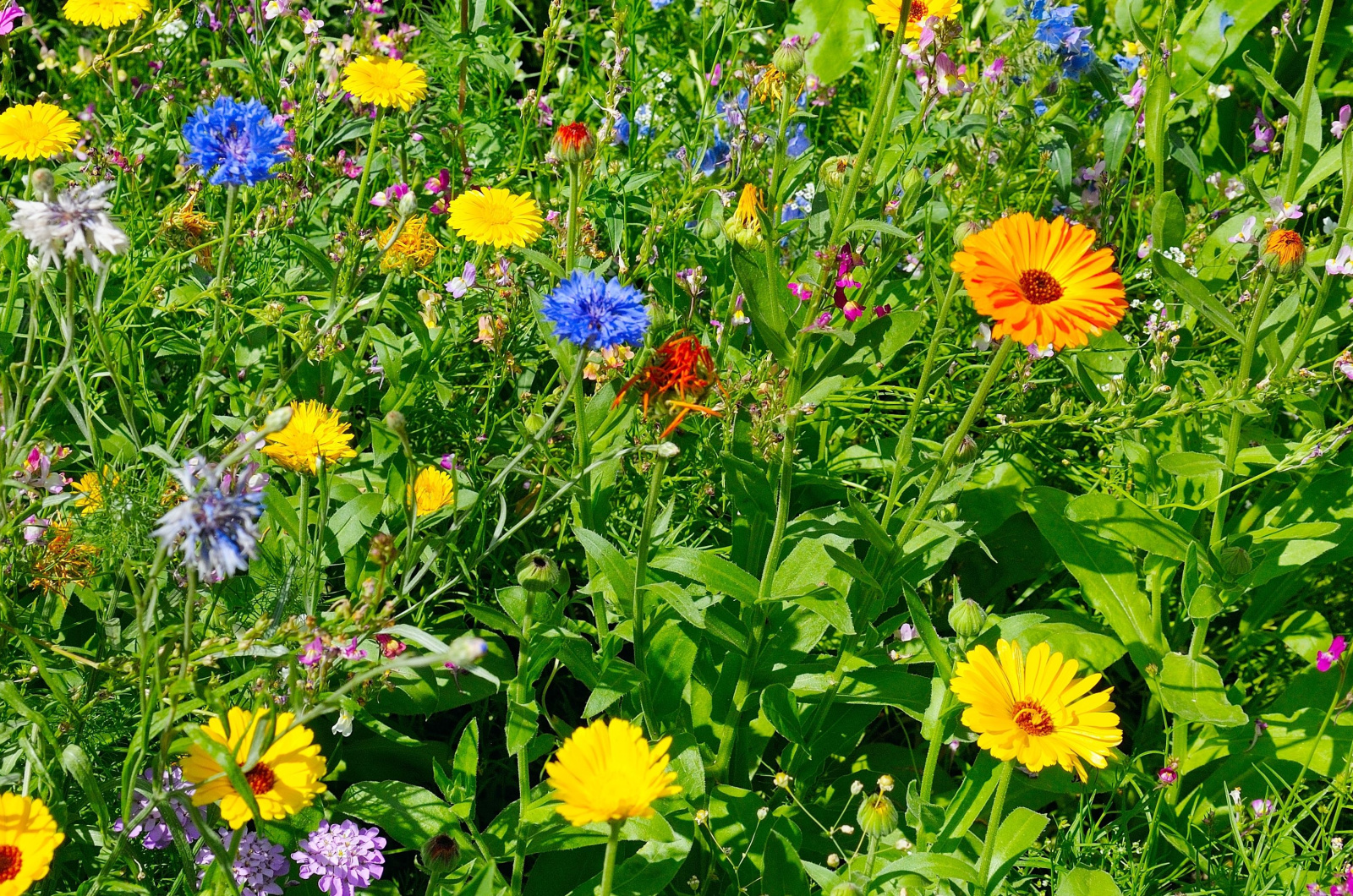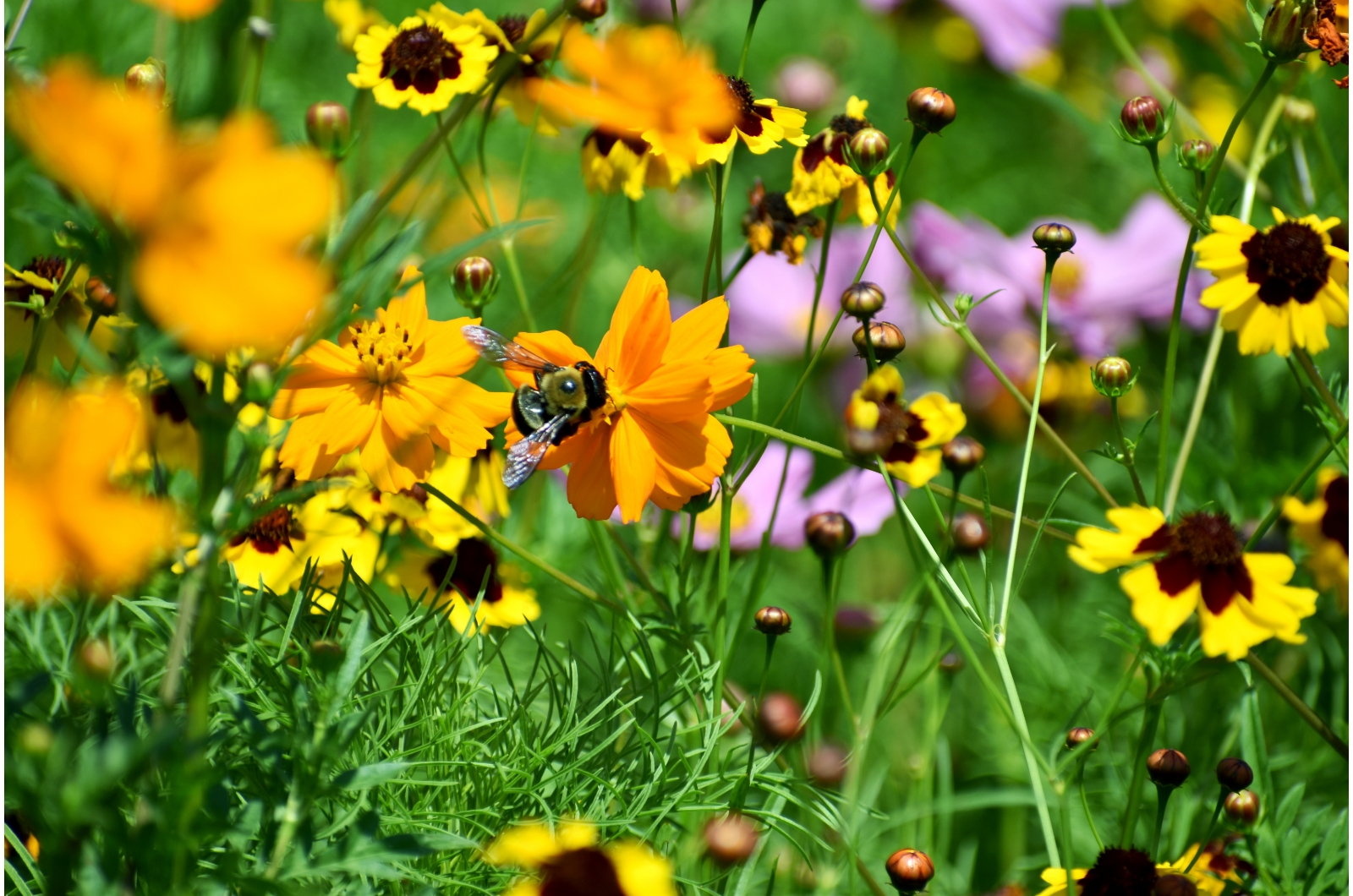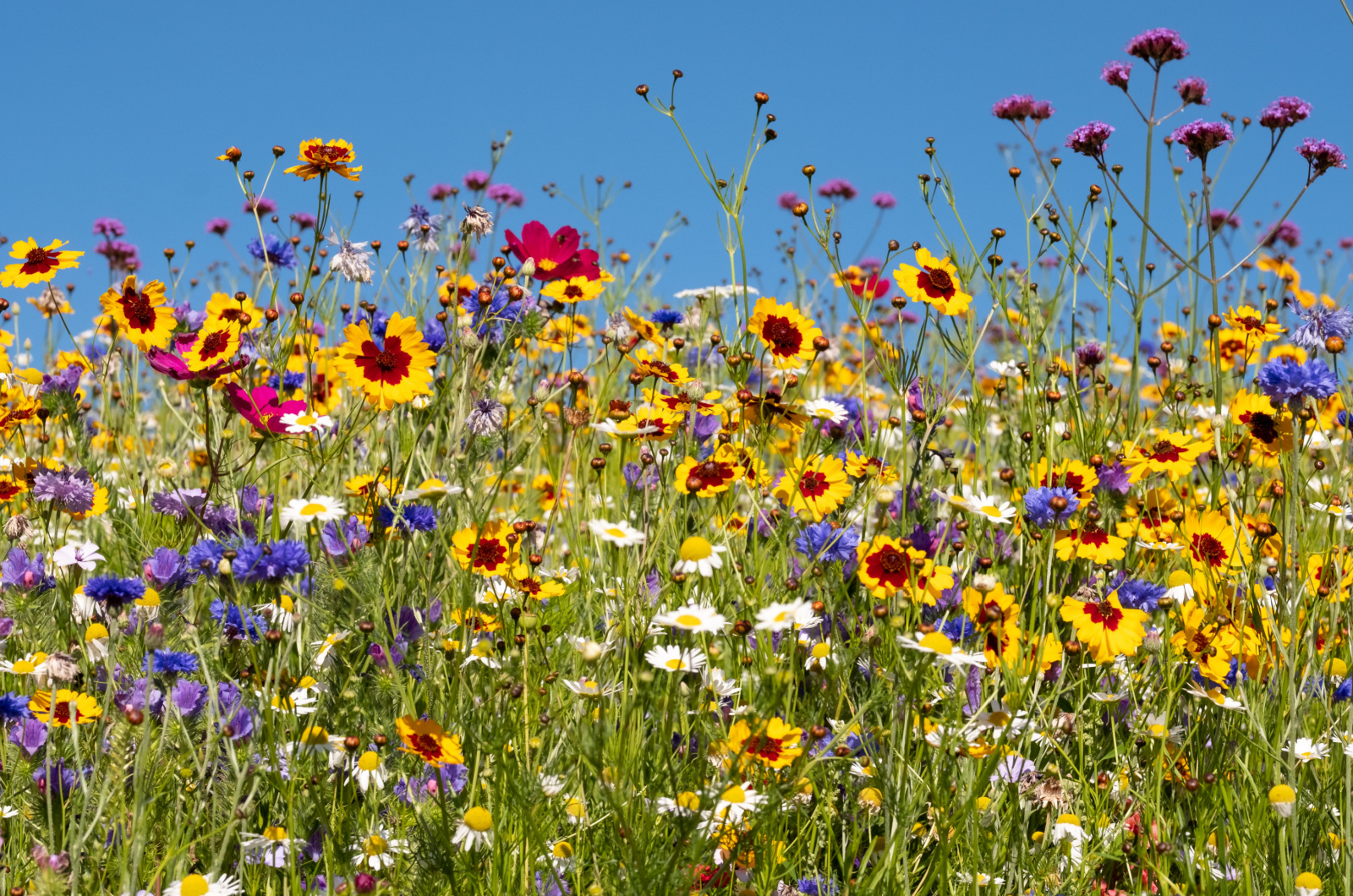Are you tired of constant mowing and lawn maintenance? If so, I have a simple solution – tapestry lawns.
You may have heard of them under a different name – meadow lawns. They involve replacing your traditional lawn with wildflowers, and the benefits are enormous!
Here’s a deeper insight into this new trend and how it can benefit your garden, biodiversity, and the overall ecosystem.
Let’s get started!
The Tapestry Lawn
As I already mentioned, tapestry lawns include growing colorful flowers and plants instead of lawn grasses. The end product resembles a tapestry due to the unique design and color, hence the name.
It uses non-invasive and non-aggressive species. By the way, natives are top plants for homeowners because they support biodiversity (more on that in the following section).
The varieties you plant depend on your growing zone. Of course, there are some wide-spread natives that work for almost any region. Sedum, creeping thyme, and white clover are a few of them.
The new USDA hardiness map has changed the plants we can grow. How? The climate is warmer in many US states, so we have to adapt.
Luckily, there is a USDA hardiness map available online. You can consult it to get a better understanding of what you can and cannot plant in your area.
Recognizing invasive and aggressive species is another thing that can help you decide what to use for your tapestry lawn. There’s an online invasive plants guide that can help you out.
The Benefits
So what are the advantages of tapestry lawns? Well, there are many benefits of replacing traditional lawns with wildflowers.
First of all, meadow lawns are time and money-saving. You don’t have to mow and maintain meadow lawns as much as traditional ones. You only have to cut them 3-4 times per year.
You’ll also save a lot on your water bill when planting varieties native to your region. In fact, native plants need 4 times less water per year than traditional lawns. (1)
That’s because they’re already adapted to those conditions and won’t need much supplemental watering, fertilizing, etc.
A study conducted in Denmark found that switching to rewilding from agri-environmental nature management is more cost-effective. (2)
Secondly, rewilding your garden will attract more pollinators and other beneficial bugs to your landscape. They will pollinate your vegetables and increase your yield by and large.
Also, they are a welcome sight in every garden!
This will increase the biodiversity of your garden and even attract wildlife such as birds. These animals and water conservation benefit the ecosystem like you wouldn’t believe.
Finally, the last benefit of tapestry lawns is that they are easy to maintain. They’re perfect even for clumsy gardeners with no greenthumbs!
All you have to do is dig up your existing lawn and plant some wildflowers and grasses native to your area.
The key is in mass-planting varieties. If you’re new to gardening or don’t have enough space, I’d suggest starting with 3 different species and working your way up.
An interesting thing about these plants is that they will self-seed, organize, and show us where they want to be.
References:
1. Save Money and Protect the Environment (n.d.). Audubon.
2. Schou, J. S. et. al. (2021). Economic Assessment of Rewilding versus Agri-environmental Nature Management. Ambio.

